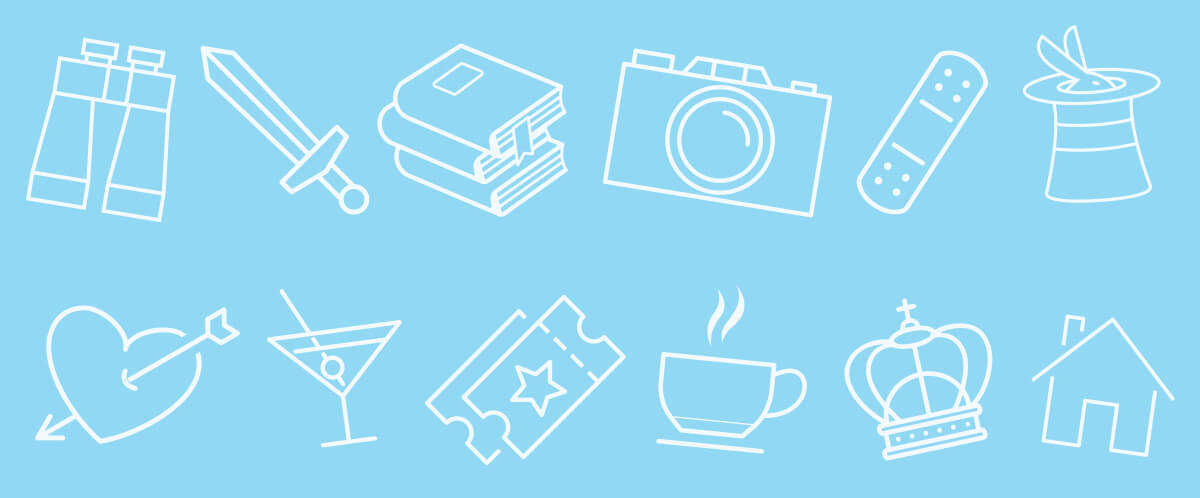
Account planners at all levels should be familiar with the notion that brand planning is often an unexpected journey.
For starters, you work within the scoped marketing budget to extract the best possible set of insights from primary research and existing data to get to a strategically-relevant brand story. Often, you are working within tight project deadlines preventing additional research. Getting to the heart of a brand story is rarely simple and is almost always an emotional process.
Why is this such an emotional process?
In the past year, I have found myself prefacing clients before branding presentations with, “At the end of this presentation, you should feel both excited and oddly comfortable with the strategic direction. If you don’t feel comfortable, I haven’t done my job properly.” Those words rang true this Spring for one of the most challenging branding projects I have worked on in my branding career.
Late last year, Trone kicked off a multi-phase research project for a complex state organization involving qualitative interviews, a quantitative survey and a brand story that had to address the needs of nearly a dozen key audiences. On several occasions, fellow coworkers personally told me that this project was unlike anything we have ever worked on before due to the complexity of the industries the client served.
After several rounds of meetings with dozens of stakeholders, we entered the last phase of the project—identifying a brand archetype and creating the all-encompassing brand story. Trone’s branding process, known as The Firefly Effect®, assigns a brand archetype to a brand to inform not only the brand story, but also the brand behavior, marketing message tone and customer experience. Brand archetypes are based on broader values, personalities and strategies that assign roles to characters throughout classic literature and popular film franchises, originally interpreted by Swiss psychiatrist and philosopher Carl Jung.
In the middle of sifting through and organizing the survey and interview data to classify the audience key needs, it dawned on me how important the brand archetype would be to the eventual brand story. The brand archetype could represent and better define the role of the client’s brand to each audience. The continued impact the client has on every single audience was the same even though the specific needs differed slightly by audience. It’s normal for the brand archetype to provide some inspiration and framework for the eventual brand story, but in this case, the archetype became the brand story.
At the conclusion of the branding presentation, our client remarked how much this brand archetype simplified their elevator pitch for all of their audiences. They were so excited by this brand story and role that they immediately commissioned a manifesto video to capture the simplified message to share with all of their employees.
Most clients are actually far less complex than government clients, but the importance of identifying the correct brand archetype for your brand story, marketing and website remains just as important. A solid brand archetype can be the difference between just a tagline and a brand story that drives purpose for customers and employees alike.
Brand Archetypes Overview:
-
The Caregiver
Caregiver brands protect others through the values of compassion and generosity.
Examples of Caregiver brands include AT&T, Johnson & Johnson and Campbell’s Soup.
-
The Creator
Creator brands create enduring value in the world through creativity and imagination.
Examples of Creator brands include Lego, Canon and YouTube.
-
The Ruler
Ruler brands seek to exert leadership, influence or organization into the lives of their customers through the values of system savviness and competence.
Examples of Ruler brands include American Express, Microsoft and Mercedes-Benz.
-
The Hero
Hero brands, often the underdogs, look to prove their worth through triumphant acts of discipline and achievement.
Examples of Hero brands include Nike, FedEx and BMW.
-
The Maverick
Maverick brands seek to disrupt what isn’t working through revolution. They value freedom and the ability to let go.
Examples of Maverick brands include Virgin, Harley-Davidson and Urban Outfitters.
-
The Magician
Magician brands transform the world to their vision through the values of inspiration and personal power.
Examples of Magician brands include Apple, Disney and Lululemon.
-
The Innocent
Innocent brands attempt to recreate paradise through the values of optimism and hope.
Examples of Innocent brands include Dove, Coca-Cola and Cottonelle.
-
The Explorer
Explorer brands strive for a better, more fulfilling life through the values of autonomy and possibility.
Examples of Explorer brands include Jeep, Red Bull and Starbucks.
-
The Sage
Sage brands expertly use their intelligence and analysis to understand their world through the values of skepticism and knowledge.
Examples of Sage brands include Google, Morgan Stanley and National Geographic.
-
The Regular Guy or Girl
Regular Guy or Girl brands want to feel belonging with others through the values of realism and empathy.
Examples of Regular Guy or Girl brands include Budweiser, IKEA and Charles Schwab.
-
The Lover
Lover brands want to experience bliss and sensual pleasure through the values of passion and enthusiasm.
Examples of Lover brands include Victoria’s Secret, Häagen-Dazs and Barilla.
-
The Entertainer
Entertainer brands want to enjoy the moment and make life more fun through the values of joy and liberation.
Examples of Entertainer brands include Doritos, GEICO and Ben & Jerry’s.
Discovering your brand archetype can be emotional and uncomfortable, but if you’re ready to take the leap, contact us and we’ll get you started on the journey.

